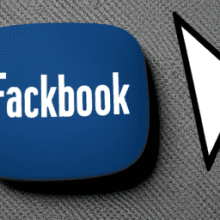How To Implement A Successful Chat Marketing Strategy For E-commerce?
Are you ready to take your e-commerce business to the next level? Look no further than implementing a successful chat marketing strategy. In this article, we will explore the key steps to effectively integrating chat as a powerful marketing tool. Discover how this innovative approach can boost customer engagement, increase sales, and provide unparalleled support. Get ready to maximize your e-commerce potential with the ultimate chat marketing strategy.

1. Set Clear Objectives
Define your goals
When implementing a chat marketing strategy for e-commerce, it is crucial to define clear objectives. Ask yourself what you hope to achieve through chat marketing. Are you looking to increase sales, improve customer engagement, or provide better support? By setting specific and measurable goals, you can align your strategy and measure its effectiveness.
Identify target audience
Understanding your target audience is essential for a successful chat marketing strategy. Identify who your ideal customers are, their preferences, and pain points. This information will help you tailor your chatbot responses and provide personalized experiences. Conduct market research, analyze customer data, and leverage customer feedback to gain insights into your target audience.
Establish key performance indicators (KPIs)
To measure the success of your chat marketing strategy, establish key performance indicators (KPIs). These metrics will help you track your progress and make data-driven improvements. Some common KPIs to consider include conversion rates, customer satisfaction scores, response rate, and engagement metrics. Set specific targets for each KPI and regularly evaluate your performance against these goals.
2. Choose the Right Chat Platform
Consider user experience
The chat platform you choose plays a crucial role in the success of your chat marketing strategy. Consider the user experience when evaluating different platforms. Look for platforms that offer a seamless and intuitive interface, ensuring that customers can easily navigate and interact with your chatbot. A user-friendly platform will enhance engagement and increase customer satisfaction.
Evaluate features and functionalities
Different chat platforms offer varying features and functionalities. Consider your specific requirements and choose a platform that aligns with your business needs. Look for features such as chatbot customization, messaging automation, and analytics capabilities. Determine if the platform allows integration with other tools and systems, such as e-commerce platforms, CRM systems, or email marketing software.
Ensure integration capabilities
Integration capabilities are essential for a comprehensive chat marketing strategy. Ensure that the chat platform you choose integrates seamlessly with your existing systems and tools. This integration allows for a streamlined flow of data and ensures a consistent customer experience across different channels. Integration also enables you to leverage customer data for personalized interactions and targeted marketing campaigns.
3. Develop a Chatbot Strategy
Determine chatbot use cases
Before implementing a chatbot, determine its use cases in your e-commerce business. Chatbots can be used for various purposes, including product recommendations, order tracking, customer support, and lead generation. Identify the areas where a chatbot can add value and enhance the customer experience. By defining use cases, you can design chatbot scripts tailored to specific scenarios.
Design effective chatbot scripts
Chatbot scripts play a vital role in delivering a seamless and personalized experience to customers. Craft scripts that reflect your brand voice and tone. Ensure that the language used is clear, concise, and easily understandable. Anticipate potential customer queries and provide informative and helpful responses. Experiment with different variations of scripts and continuously refine them based on customer feedback.
Implement natural language processing (NLP)
Natural language processing (NLP) technology allows chatbots to understand and respond to natural human language. Implementing NLP in your chatbot strategy enhances the conversational capabilities of the chatbot, making interactions more human-like. It enables the chatbot to interpret customer queries accurately and provide relevant responses. Leverage NLP to create a more seamless and engaging chat experience for your customers.
4. Personalize the Customer Experience
Collect customer data
To deliver personalized experiences through chat marketing, collect relevant customer data. Leverage customer profiles, purchase history, and browsing behavior to gain insights into individual preferences. Use this data to tailor chatbot interactions and provide personalized product recommendations. Collecting customer data also helps in understanding customer needs and improving your overall e-commerce strategy.
Customize chatbot interactions
Customize chatbot interactions based on the data collected. Use the customer’s name, preferences, and previous interactions to provide a more personalized experience. Tailor responses according to individual preferences and purchase history. Take advantage of customer segmentation to deliver targeted messages and offers. The more customized the chatbot interactions, the more engaged and satisfied your customers will be.
Segment your audience
Segmenting your audience allows you to target specific groups with tailored messages and offers. Divide your customer base into segments based on demographics, preferences, or buying behavior. Develop chatbot scripts that align with each segment’s specific needs and interests. Segmenting your audience enables you to deliver personalized experiences and improve the effectiveness of your chat marketing strategy.

5. Optimize Chatbot Performance
Regularly review and refine chatbot responses
Regularly reviewing and refining chatbot responses is essential for improving its performance. Analyze customer feedback, identify common pain points, and make necessary adjustments to your chatbot scripts. Continuously monitor chatbot interactions and identify areas for improvement. By regularly optimizing chatbot responses, you can enhance the customer experience and increase the effectiveness of your chat marketing strategy.
Leverage machine learning for continuous improvement
Machine learning can significantly improve the performance of your chatbot over time. Implement machine learning algorithms that analyze customer interactions and adapt the chatbot’s responses accordingly. Machine learning allows the chatbot to learn from past conversations, understand context, and provide more accurate and relevant information to customers. Leverage machine learning to continuously improve your chatbot’s performance.
Monitor customer feedback and adjust accordingly
Customer feedback is a valuable resource for improving chatbot performance. Regularly monitor customer feedback and adjust your chatbot strategy based on the insights gained. Pay attention to customer satisfaction scores, response time, and the overall chatbot experience. Use customer feedback to identify areas where the chatbot can be enhanced and implement necessary changes. Continuous monitoring and adjustment are essential for delivering an exceptional chat marketing experience.
6. Integrate Chat with Other Channels
Align chat marketing with social media
Integrating chat marketing with social media allows you to reach a broader audience and leverage social media platforms’ engagement capabilities. Promote your chatbot on social media channels and provide links or dedicated chat widgets for customers to connect. Integrate your chatbot with social media platforms to seamlessly interact with customers through their preferred channels.
Sync with email marketing campaigns
Email marketing remains a powerful tool for engaging with customers. Sync your chat marketing strategy with your email marketing campaigns to reinforce messaging and drive conversions. Use email newsletters or automated emails to encourage customers to engage with your chatbot. Leverage customer data obtained through chat interactions to personalize email campaigns further, enhancing the overall customer experience.
Connect with live chat support
Integrating your chatbot with live chat support offers a seamless transition from automated to human-assisted support. Allow customers to escalate their chatbot interactions to live agents when necessary. Ensure a smooth handover process between the chatbot and live agents, providing a consistent and personalized support experience. Connecting chat with live support enhances customer satisfaction and improves overall support quality.

7. Promote Chat on Your Website
Strategically position chat widgets
Strategically positioning chat widgets on your website can significantly impact customer engagement. Place chat widgets prominently on high-traffic pages, such as the homepage or product pages. Ensure that the chat widget is easily accessible and visible to customers. Consider using proactive chat invitations to initiate conversations and guide customers towards making informed purchasing decisions.
Highlight the benefits of chatting
Communicate the benefits of chatting with your chatbot to customers. Emphasize features such as instant assistance, personalized recommendations, and easy access to product information. Highlight the convenience and efficiency of using chat for support or inquiring about products. By showcasing the benefits, you can encourage more customers to engage with your chatbot and increase overall chat usage.
Offer incentives for engaging with chat
Incentivize customers to engage with your chatbot by offering exclusive discounts, promotions, or rewards. Provide incentives for completing a purchase through chat or referring friends to chat with your bot. This not only increases customer engagement but also promotes brand loyalty and encourages repeat purchases. Offer valuable incentives that resonate with your target audience to maximize the effectiveness of your chat marketing strategy.
8. Leverage Chat for Customer Support
Provide real-time assistance
One of the key benefits of chat marketing is the ability to provide real-time assistance to customers. Ensure that your chatbot is equipped to answer common customer queries promptly and accurately. Implement chatbot features such as automated order tracking or FAQ responses for quick and efficient support. The availability of real-time assistance enhances customer satisfaction and encourages repeat purchases.
Offer self-service options
Empower customers to find information and resolve issues independently by offering self-service options through your chatbot. Provide comprehensive product catalogs, sizing guides, or troubleshooting FAQs within the chat interface. Enable customers to track their orders or process returns without human intervention. By offering self-service options, you improve customer convenience and reduce the workload on your support team.
Enable chat escalation to live agents
While chatbots handle most customer interactions, there will be cases where human intervention is necessary. Enable chat escalation to live agents when complex issues or specific expertise is required. Provide seamless integration between the chatbot and live chat support, ensuring a smooth handover process. Offering the option to connect with a live agent reassures customers that their concerns will be addressed personally and effectively.
9. Analyze and Track Chat Metrics
Measure chatbot performance
Regularly measure and evaluate chatbot performance by tracking relevant metrics. Monitor response times, resolution rates, and customer engagement metrics. Analyze the effectiveness of your chatbot in addressing customer queries and driving conversions. Use these insights to identify areas for improvement and make data-driven decisions to enhance your chat marketing strategy.
Evaluate customer satisfaction
Customer satisfaction is a crucial indicator of the success of your chat marketing strategy. Implement surveys or feedback mechanisms to measure customer satisfaction with chat interactions. Track customer feedback and sentiment to identify areas where the chatbot can be fine-tuned. Address customer concerns promptly and make necessary adjustments to optimize the customer experience.
Track conversion rates
Tracking conversion rates is essential for evaluating the impact of your chat marketing strategy on your e-commerce business. Measure the percentage of chat interactions that lead to conversions, such as completed purchases or sign-ups. Analyze conversion rates across different chatbot use cases or segments to identify opportunities for improvement. Use this data to refine your chat marketing strategy and maximize its effectiveness.
10. Continuously Improve and Adapt
Gather customer feedback
Continuously gather customer feedback throughout the implementation of your chat marketing strategy. Use feedback forms, surveys, or chatbot interactions to obtain insights into the customer experience. Pay attention to common pain points or suggestions for improvement. Actively listen to your customers’ feedback and make necessary adjustments to deliver an exceptional chatbot experience.
Implement A/B testing for chatbot optimization
Implement A/B testing to optimize your chatbot performance effectively. Test different variations of chat scripts, messaging, or user interfaces to identify the most effective approach. Compare the performance of different variations and make data-driven decisions to refine your chatbot strategy. By continuously testing and optimizing, you can ensure that your chat marketing strategy evolves with changing customer preferences.
Stay updated on industry trends
Staying updated on industry trends and best practices is vital for the success of your chat marketing strategy. The chat marketing landscape is continuously evolving, with new technologies and approaches emerging. Follow industry blogs, attend conferences, or join professional communities to stay informed about the latest developments. Apply industry insights to your chat marketing strategy to stay ahead of the competition and provide a cutting-edge experience to your customers.
Implementing a successful chat marketing strategy for e-commerce requires careful planning, strategic decision-making, and continuous optimization. By setting clear objectives, choosing the right chat platform, developing a chatbot strategy, personalizing the customer experience, optimizing chatbot performance, integrating chat with other channels, promoting chat on your website, leveraging chat for customer support, analyzing and tracking chat metrics, and continuously improving and adapting, you can create a chat marketing strategy that drives engagement, enhances customer satisfaction, and boosts conversion rates. Embrace the power of chat marketing to elevate your e-commerce business to new heights.




